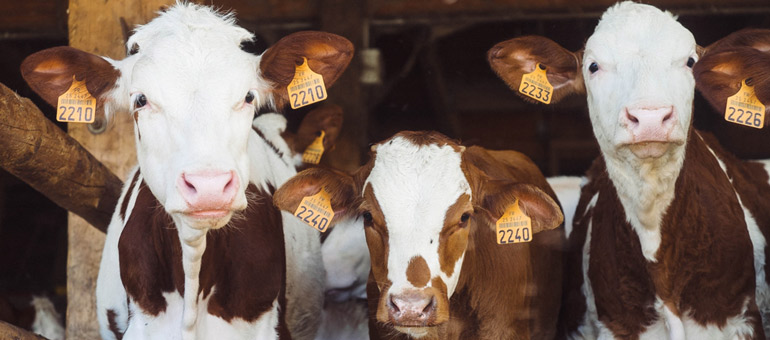World Food Safety Day in 2020 falls during an ongoing pandemic that has sickened millions, killed hundreds of thousands and cost trillions of USD. The emergence of COVID-19 has been associated with wet or traditional markets, and there are many studies, reports and blogs on how it is affecting food systems through massive job losses, broken supply chains, and reduced access to food.
Taking a step back from the many consequences of the pandemic, this blog will focus on the more fundamental issue of why our food systems keep providing us with novel human diseases and what can be done about it. In addition to well-known zoonotic diseases transmitted from domestic food animals to humans, many of the most catastrophic emerging diseases that have jumped to humans have originated from wild mammals or birds. Highly pathogenic avian influenza, bovine spongiform encephalitis, HIV/AIDS are some of the most tragically deadly examples from recent decades.
How has our food system enabled these pathogens to jump to humans?
If, as a thought exercise, we wanted to design an ecosystem that would help pathogens jump species barriers and make people sick and kill them, how would we go about it? The first clue is that 75% of new human diseases come from wildlife, so to jump species, we would first need to create bridges or routes of connection between wildlife and people. Since wild animals will avoid people, we would need strong incentives for people to get into contact with wildlife, and particularly blood and body wastes, which are often where pathogens are found. There are currently powerful incentives:
- people hunting cheap wildlife as a food source rather than purchasing more expensive farm animals;
- people who buy exotic wildlife food as a status symbol;
- people who think eating wildlife has medicinal, cultural or other life-enhancing properties.
Our current animal food supply chains are unfortunately very well suited to meet these conditions and transmit pathogens. Some important drivers:
- For decades rich countries have bred livestock for high production in intensive systems and paid little attention to disease resistance. Much of our livestock consists of massive colonies of genetic clones, living in high density with many close contacts, ideal for pathogen transmission.
- Less developed countries have imported intensive production systems but have not been able to establish biosecurity (i.e. protecting livestock from animal diseases), creating the worst of both worlds: large numbers of highly vulnerable livestock not well separated from wildlife, making them a bridging host which can pick up wildlife pathogens, amplify them, and bring them closer to people.
- Profit-driven modernisation and industrialisation of livestock processing often result in large numbers of workers living in crowded and un-hygienic conditions while lacking access to good health care.
How can we better prevent, detect, report, and respond to large-scale zoonotic diseases outbreaks originating from the food systems and reduce the chance of future pandemics?

Our current animal food supply chains are unfortunately very well suited to meet these conditions and transmit pathogens. © Annie Spratt/Unsplash
An obvious response is to break the bridges that bring wildlife pathogens to humans and livestock. We can distance ourselves and our animals more from wildlife; provide sufficient habitat where wildlife can live undisturbed; only farm, hunt and eat wildlife under safe and biosecure conditions, and change how we farm our livestock to break the bridge and avoid encroachment into wildlife territory.
We could also work to shift or reduce livestock product consumption. Here we need to draw a distinction between those who like eating animals but don’t need to, as they can afford to eat a balanced low-animal-source diet, and the billions of others who would derive significant nutritional benefits if they consumed more animal source food. There are also some novel ideas: could meat be replaced by insects, lab-grown meat, or artificial meat-like products? This is a small, exciting and growing area. There is much debate over the cost, acceptability, healthiness and environmental impacts of these novel foods, but at the moment it is not a mass-market option. At a global level, current levels of livestock consumption are likely to continue for the foreseeable future. Hence, we need to raise, process, and sell livestock in ways that contribute to nutrition while controlling risks.
We can better monitor and report on the health of wildlife, for example using sentinel wild species, to detect shifts in wildlife pathogens that may signal a potential spillover from wild to domesticated animals and into the food system.
We can also change perceptions and demand associated with wildlife meat consumption. At one time all of humanity consumed wildlife and over the centuries fewer and fewer people do. While traditional or medicinal consumption of wildlife products are likely to continue, we should better regulate it in terms of domestic and international trade, and encourage a shift to biosecure and low-risk practices. While neither easy nor short-term, behavioural psychology increasingly provides us with tools to shift to safer and healthier food handling and consumption.
The COVID-19 pandemic has highlighted many vulnerabilities in our food systems. Fortunately, there are ways to build back better and close the bridges that can bring pathogens from wildlife to domestic livestock production. The current pandemic may at last force us to better account for health and disease consequences of how we make choices around food and food supply systems, so we can avoid catastrophic outbreaks.